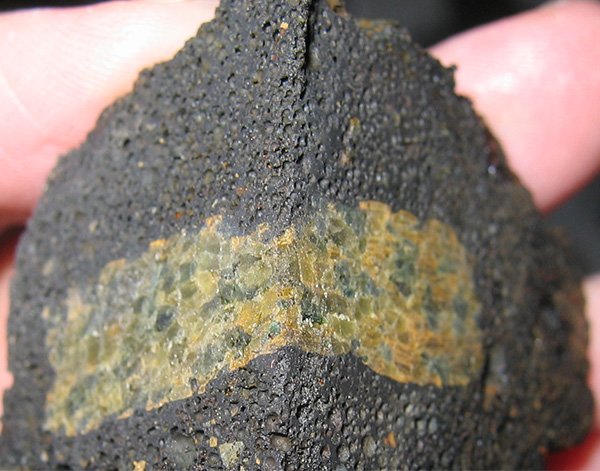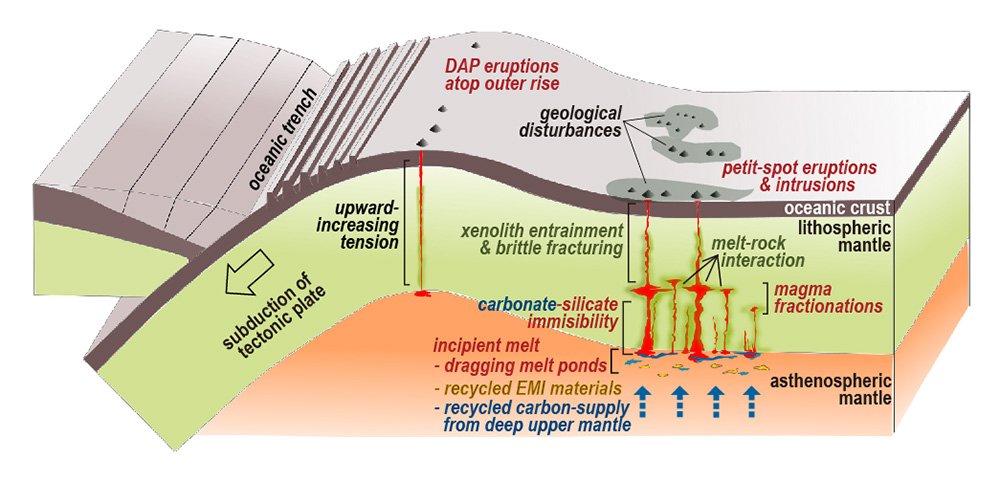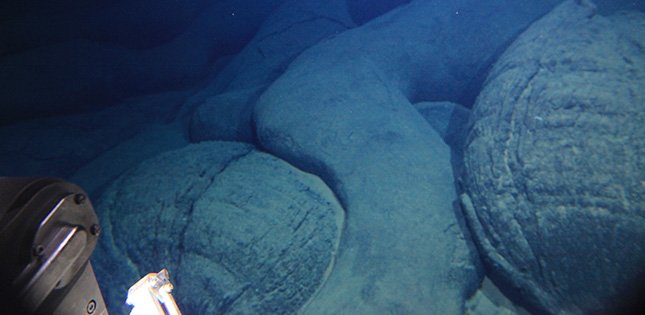Researchers from Tohoku University and the Chiba Institute of Technology have painted a clearer picture of what goes on below petit-spot volcanoes on the deep-sea floor of the Pacific Plate. Their newly presented geological structure, which was created by associate professor Naoto Hirano from Tohoku University's Center for Northeast Asian Studies and senior research scientist Shiki Machida from the Chiba Institute of Technology, was published in the journal Communications Earth & Environment.
Earthquakes and volcanoes occur because the outer part of Earth's surface, the lithosphere, contains tectonic plates which move. Scientists believe the ductile asthenosphere underneath the lithosphere drives plate motion. However, the type of rocks existing in the asthenosphere, as well as the asthenosphere melting process, have remained largely unknown.
Petit-spot volcanoes were first recognized in 2006 near the Japan Trench. They are young, small volcanoes that erupt along fissures from the asthenosphere, just below the tectonic plates. Because of this, rocks obtained from deep sea petit-spot volcanoes provide a window into the mostly unexplored asthenosphere and give scientists a better understanding of plates' nature and plate tectonic theory. More recently, researchers have unearthed petit-spot volcanoes in different trenches such as the Mariana, Tonga, Suda, and Chile Trenches.

ⒸHirano and Machida
To develop their structure, Hirano and Machida first evaluated all previous geochemical data on petit-spot magmas, their surrounding geology, and rocks from the deep mantle entrained into petit-spot magmas. They then specified the elemental components of petit-spot lava to distinguish it from other volcanoes before validating that petit-spot magma does not form a homogenous mixture with carbonate magma.
The researchers also generalized that petit-spot eruptions disturbed the deep-sea geological environment. Hot lava throws the cold deep-sea sediment into disorder preceding the subduction of the tectonic plate. Plausibly, the presence of the disordered sediment could prevent extending certain focal regions from becoming megathrust earthquakes.
Based on these results, the pair generated an image capturing the tectonic plate before subduction into the deep mantle. "Petit-spot eruptions disturb the geology of the deep-sea floor and the ascending petit-spot magma from the carbon-rich asthenosphere changes the component of the tectonic plate rocks," says Hirano. "Until this study, little was known about the modifications of tectonic plates prior to their subduction."

- Publication Details:
Title: The Mantle Structures Below Petit-spot Volcanoes
Authors: Naoto Hirano and Shiki Machida
Journal: Communications Earth & Environment
DOI: 10.1038/s43247-022-00438-1
Contact:
Naoto Hirano
Center for Northeast Asian Studies, Tohoku University
Email: nhirano tohoku.ac.jp
tohoku.ac.jp
Websites:
https://nhirano.jimdofree.com/
http://www2.cneas.tohoku.ac.jp/english/index.html

